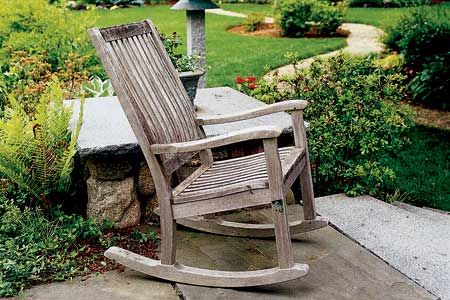There are few pleasures in life more sublime than enjoying the great outdoors without leaving your home. With spring finally here, now is the time to think about expanding your home into the outdoors with a backyard deck.
There is an almost limitless number of options for making the backyard deck/patio area into something as personal and special as the interior of your home is.
You can create a simple, one-level deck where family members can sit and take in nature’s many benefits, or go the other direction and build an exotic outdoor environment, one that includes an outdoor kitchen with grill, granite bar, refrigerator, and outdoor stereo system. The only real limits are your budget, your imagination, and what is permissible in your neighborhood.
Your first task, therefore, is setting your parameters: What do you want to achieve with your deck/patio? What do you want it to look like? How much do you want to spend? What restrictions are imposed by homeowner association covenants and/or local zoning regulations? Do local laws require a building permit? Do you want to build it all yourself or contract it out?
A small, 10×12 foot, single-level deck built of basic materials as a do it yourself project can cost $500 to $1,000, but as the size of the deck increases and the quality of the materials goes up, that number can multiply exponentially.
As with any home improvement project, the more research and planning you do on the front end, the better your deck endeavor will go. You’ll save time, money and frustration by thinking through what you want to do ahead of time.
Fortunately, there are more resources available now than ever before to help design and build the perfect project for each need. In terms of online resources, one of the most helpful and easiest to use tools is the Lowe’s Deck Designer, a comprehensive service that allows users to quickly and easily create custom decks or select example decks that the company stocks. The Lowe’s Deck Designer generates a custom report for each design and offers a comprehensive list of accessories as well. It’s free, too, which is a benefit.
There are myriad other sources of information as well, including deck plans from HomePlans.com and Decks.com.
You can use online sites to create decks in a virtual world before going through the time and expense of trying it at home, and you can also glean ideas for your design from the work others already have done.
Regardless of where your deck design comes from, it’s important to create one that’s friendly to and consistent with your environment, both in the local and global sense.
Historically, woods such as pine, cedar, redwood, mahogany, and ipe have been among the most popular for deck construction. Each has its advantages and its advocates. Ipe, for example, has a fantastic reputation for its resistance to bugs and weather rot, but much of it is harvested from South American rainforests, which is not a good thing. Pine is relatively inexpensive at about $15 per square foot—about half what the considerably more elegant redwood and cedar cost.
But traditional woods certainly are not your only decking options. Composite materials, which as the name implies are created from multiple materials, are gaining popularity. Most are made from some combination of recycled ground up wood and plastic resins.
Plastic lumber, on the other hand, contains no wood whatsoever. Aluminum decking is another option.
To most eyes, composites and plastic lumber lack the beauty and authenticity of natural woods. Their selling point, of course is that they require less maintenance than traditional woods and don’t splinter, rot, or taste good to termites. The quality and selection of nontraditional materials has improved sharply in recent years.
Information about both traditional woods and alternative decking is available from the nonprofit Deck Industry Association.
Material choice, like most elements of deck design, is a highly personal decision. There is no right material for every application, just as there is no one correct shape or size for each deck. There is no question, however, that non-wood decks are gaining both in popularity and quality.
Decks should be designed and built of materials that complement your home and those in your neighborhood. To that end, it’s not unusual for homeowner associations to include covenants that specify acceptable materials and maximum sizes for any home modifications, including decks. Before committing to a new project, make sure it conforms to applicable homeowner covenants and zoning restrictions, if any.
To maximize the environmental appeal of your deck, let it harmonize with your backyard. Decorative plantings in the form of flowerbeds or a small vegetable garden can serve as colorful enhancements to set the deck off and increase its natural attractiveness.
Especially with low elevation decks, shrubs can be planted around the perimeter to partially obscure the lines of the deck. Strategically placed trees are an excellent source of shade for decks.
And while you are going through the effort and expense of adding a first rate deck to the rear of your home, now is the time to prep your backyard for spring so you get maximum enjoyment out of the new structure.
That means the yard should get the basics: Clean up the yard and compost dead leaves and branches, which later can be used in flower beds and around plants and trees. Prune trees and plants so they will grow more healthily and quickly.
Depending on location and soil, core aeration and application of slow release fertilizer can help your lawn look its best.
After all, with a new custom deck, you’ll be spending a lot more time outdoors, and you’ll want your yard to measure up to the deck—both things of beauty, both in harmony with the environment and, most importantly, both looking great.

